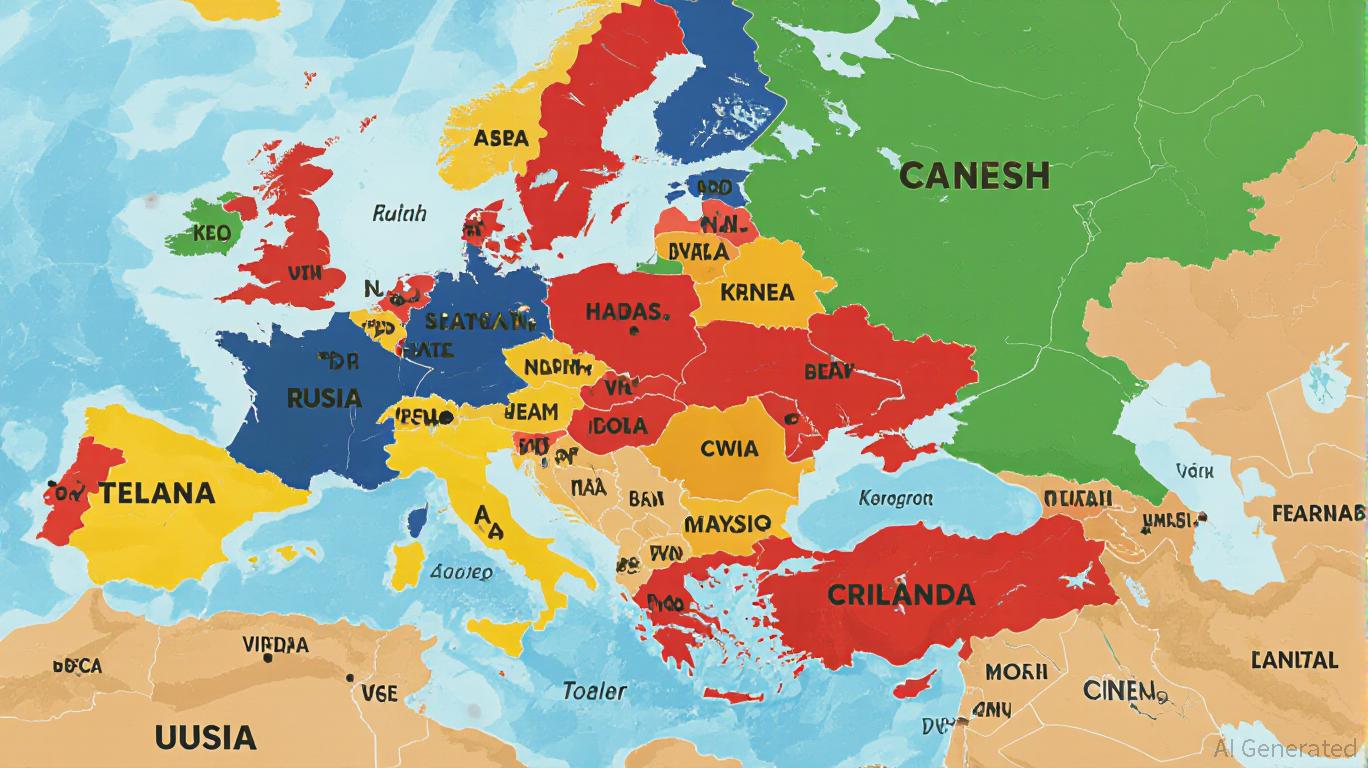
The August 15, 2025 summit between U.S. President Donald Trump and Russian President Vladimir Putin in Alaska has thrust the Trump-Putin-Ukraine diplomatic triangle into the spotlight. This meeting, framed as a potential breakthrough in ending the three-year war in Ukraine, carries profound implications for global markets. Investors must now grapple with the dual forces of geopolitical uncertainty and the economic ripple effects of territorial concessions, sanctions, and shifting alliances. Below, we dissect the risks and opportunities across defense, energy, and European equity markets, offering a roadmap for navigating this volatile landscape.
Defense Sector: Volatility Amid Uncertainty
The defense industry stands at a crossroads. A potential peace deal involving territorial swaps—such as Russia retaining Donbas and Crimea in exchange for withdrawing from Zaporizhzhia and Kherson—could reduce long-term demand for military equipment. However, near-term volatility is inevitable. Ukrainian President Volodymyr Zelensky’s firm rejection of concessions has already spurred continued U.S. military aid, including a recent $104 million Foreign Military Sale (FMS) for M777 howitzers.
Investors should monitor two key dynamics:
1. Short-Term Surge: If the Trump-Putin summit fails to produce a deal, defense contractors may benefit from prolonged conflict. Companies like Raytheon Technologies (RTX) and Boeing (BA) could see increased orders for artillery, drones, and cyber-defense systems.
2. Long-Term Rebalancing: A successful peace agreement might shift focus toward post-conflict reconstruction and border security, favoring firms like General Dynamics (GD) and L3Harris Technologies (LHX), which specialize in infrastructure and surveillance.
Investment Playbook: Hedge against volatility by diversifying defense holdings. Consider a mix of short-term beneficiaries (e.g., Raytheon) and long-term reconstruction plays (e.g., Bechtel Group).
Energy Markets: Sanctions, Subsidies, and Strategic Realignments
The energy sector is poised for seismic shifts. A trilateral peace deal could ease U.S. and European sanctions on Russia, potentially stabilizing oil and gas prices. However, the U.S. has already escalated pressure by imposing a 25% tariff on Indian exports—a move targeting India’s role as a Russian oil buyer.
Key risks and opportunities include:
– Russian Resilience: Despite a 33% drop in oil revenue since July 2024, Russia’s state-controlled energy giants (e.g., Gazprom) may benefit from a thaw in relations. Investors should watch for Russian energy partnerships with U.S. firms, particularly in the Arctic.
– European Exposure: A peace deal could reduce demand for U.S. liquefied natural gas (LNG), impacting companies like Cheniere Energy (LNG). Conversely, European utilities like E.ON (DE:EOAN) may see renewed investment in grid modernization and renewable energy.
– Sanctions Compliance: Firms in sanctions-compliance sectors (e.g., cybersecurity, financial audits) could see a surge in demand as companies navigate complex regulatory landscapes.
Investment Playbook: Position in energy transition stocks (e.g., NextEra Energy, NE) and sanctions-compliance tech firms. Avoid overexposure to Russian energy unless geopolitical risks abate.
European Equity Markets: A Tale of Two Scenarios
The STOXX Europe 600 index is a barometer for the region’s exposure to the Ukraine conflict. A successful peace deal could spur a rally in cyclical sectors like industrials and consumer discretionary, while a failed summit might trigger a flight to safety in government bonds and gold.
Critical factors to watch:
– German and French Equities: Germany’s industrial base (e.g., Siemens, Thyssenkrupp) and France’s defense sector (e.g., Airbus, Safran) are highly sensitive to war outcomes. A prolonged conflict could depress manufacturing output, while a peace deal might unlock pent-up demand.
– Eastern Europe: Countries like Poland and Romania, which have borne the brunt of refugee flows and military aid logistics, could see infrastructure investments surge. Look for opportunities in regional construction firms and logistics providers.
– Currency Volatility: A weaker euro (driven by divergent monetary policies between the ECB and Fed) could hurt European exporters. Investors should consider hedging EUR exposure via currency ETFs or short-term forwards.
Investment Playbook: Allocate to European blue chips with strong balance sheets (e.g., Nestlé, ASML) and regional infrastructure plays. Use options to hedge against currency swings.
The Road Ahead: Navigating Uncertainty
The Trump-Putin-Ukraine summit is a high-stakes gamble. While a trilateral agreement could stabilize markets, the absence of Ukraine in initial talks raises concerns about legitimacy and long-term compliance. Investors should prepare for:
– Near-Term Volatility: The week of August 15 will likely see sharp swings in defense, energy, and European equities.
– Reallocation in Infrastructure: Post-conflict reconstruction could drive demand for construction, utilities, and technology firms.
– Sanctions-Compliance Sectors: As global supply chains adjust, firms specializing in compliance software and auditing services may see growth.
In conclusion, the diplomatic triangle’s outcome will reshape market fundamentals. A disciplined, diversified approach—balancing short-term hedges with long-term growth sectors—is essential for weathering this geopolitical storm.
